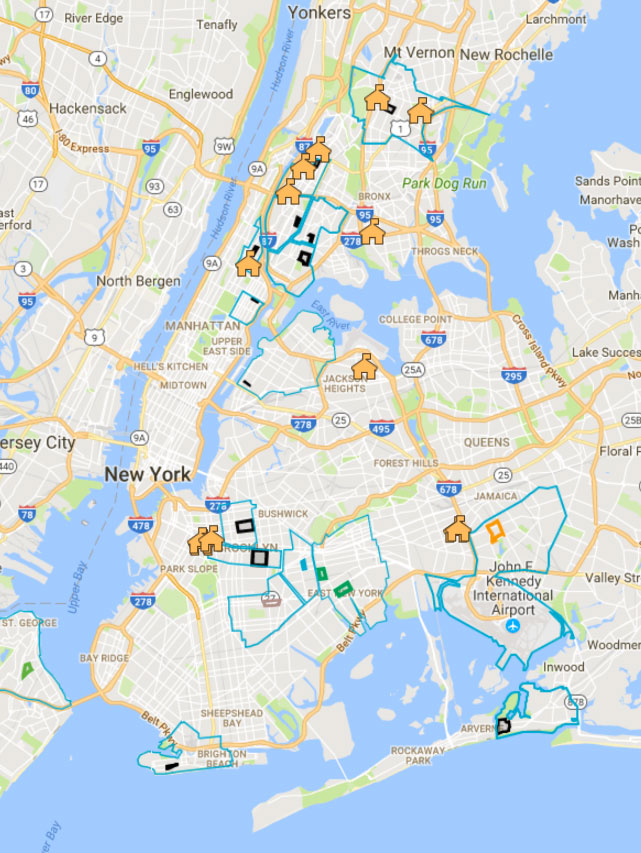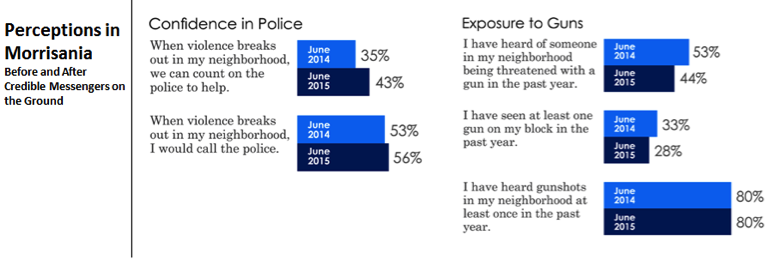
 Mayor's Office to Prevent Gun Violence311
Mayor's Office to Prevent Gun Violence311 Search all NYC.gov websites
Search all NYC.gov websites
Interventions
The Crisis Management System: this network deploys teams of credible messengers who mediate conflicts on the street and connect high-risk individuals to services that can reduce the long-term risk of violence. From 2010 to 2019, data shows the Crisis Management System has contributed to an average 40% reduction in shootings across program areas compared to 31% decline in shootings in the 17 highest violence precincts in New York City.

- Backed by a $36 million investment from the Administration and the City Council, the Crisis Management System is operated in partnership with a network of non-profit providers in 21 precincts.
- Teams of “violence interrupters” – typically credible messengers who have turned their lives around – engage individuals most likely to be involved in gun violence. The teams work to deescalate disputes before crisis or violence erupt and connect high-risk individuals to extensive networks that provide job training, employment opportunities, mental health services and legal services to increase the likelihood of long-term violence reduction.

- The effect of this effort is not only enhanced safety, but also an improved relationship between government and New Yorkers. Emerging evidence of this can be seen in some of the key indicators being tracked by the John Jay College of Criminal Justice, which is currently evaluating the Cure Violence component of the Crisis Management System.

Wrap Around Supportive Services
School Conflict Mediation: The school-based conflict mediation component is designed to provide culturally competent programming to at-risk youth to reduce the likelihood of their involvement in violence in their school and community while increasing their attendance, academic progress, and other social measures. The program includes school-wide activities to assist in changing culture around violence and to assist schools in their response to incidents that occur in the school or community.
Employment Program: Justice Plus is a flexible, wrap- around designed to support referred participants of neighborhood-based Cure Violence programs by providing a range of work readiness opportunities. These opportunities include: work experience placements, hard/vocational and soft job skills development, and job search and career awareness/planning competencies. The program participants receive stipends.
Therapeutic Mental Health Services: Therapeutic mental health services are offered and designed to provide culturally competent therapeutic support to children, youth, and families impacted by gun violence by improving resilience, network support, and building skills in self-management and self-care.
Legal Services: Cure Violence participants receive support from the Legal Aid Society such as how to identify a legal emergency and substantive legal issues such as criminal law, housing, family, employment issues, what to do post-conviction and the hidden civil consequences of a criminal conviction. Legal representation is provided as needed.
Anti- Gun Violence Employment Program: The Anti-Gun Violence Employment Program (AGVEP) is a seasonal employment program that employs participants (14-24) who are serviced through the New York City Crisis Management System. The program consists of two phases: a 6 week summer program and a 25 week school year program. Job responsibilities include but are not limited to community canvassing, asset mapping, data/research gathering, community outreach and coordinating/ conducting shooting responses.


